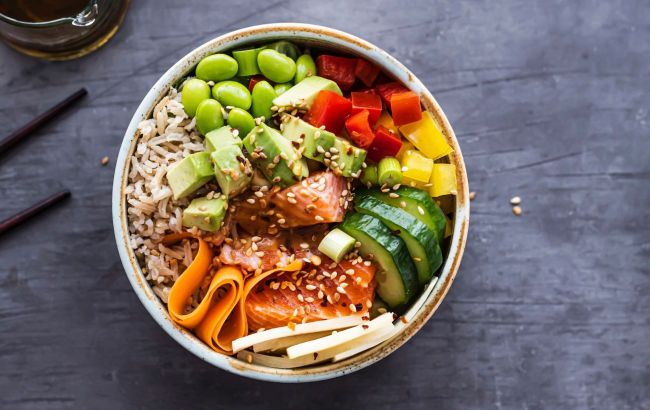Bowls healthy or not – Dietitian's explanation
 Are bowls good for your health (photo: Freepik)
Are bowls good for your health (photo: Freepik)
The healthy eating trend has long taken over various establishments, with bowls becoming particularly popular. It is worth knowing whether these dishes are truly beneficial for health or if it’s just clever marketing, according to Ukrainian dietitian Tetyana Lakusta.
What are bowls
Bowls are a great option for a balanced meal, allowing you to combine various ingredients and flavors according to your preference. You can also take the ingredients and dressing separately when on the go and mix them when you're ready to eat.
The term bowl refers to the way the dish is served, with various ingredients (vegetables, fruits, grains, meat, or seafood) cut and arranged separately in a deep bowl. This dish first appeared in Ukraine a few years ago.
The visual appeal is one reason why bowls have gained significant popularity. In the age of social media, many people are chasing after beautiful photos of their meals, and dishes like borscht or mashed potatoes with cutlets don’t always look as attractive.
By consuming a bowl, you get maximum health benefits because it includes all the components needed for a healthy diet. Additionally, bowls encourage people to eat foods they might not usually try, such as pumpkin seeds or sesame seeds.

Bowl (photo: Freepik)
Base of the dish
For the base of the bowl, the dietitian recommends choosing grains and legumes, such as:
- millet;
- cornmeal;
- buckwheat;
- quinoa;
- lentils;
- wild and red rice;
- peas (green or dried);
- chickpeas;
- bulgur.
To make the dish more filling, add proteins and fats like:
- hummus;
- stewed mushrooms (or pickled);
- boiled or baked meat;
- poultry;
- fish (grilled, baked, or lightly salted);
- boiled shrimp;
- ham;
- canned sardines;
- eggs (boiled, poached, or scrambled);
- sesame seeds;
- avocado;
- raw nuts;
- filaxseeds;
- olives.
The vegetables in the bowl should be cooked, such as baked, lightly boiled, or steamed:
- eggplant and zucchini;
- sweet pepper;
- onion;
- pumpkin;
- potatoes;
- sweet potato;
- beetroot;
- parsnip;
- jerusalem artichoke;
- carrot;
- broccoli;
- cauliflower;
- green beans;
- asparagus.
Bowl dressing
Ideally, the dish should have a variety of flavors:
- salty;
- sweet;
- sour;
- spicy;
- bitter (using herbs).
A standard dressing is olive oil, lemon juice, and a pinch of salt - an ideal option.
You might also try variations with apple or wine vinegar, honey, mustard, Tabasco, spices, dried garlic, and cumin.
We also discussed what happens to the body when eating the same food every day.

